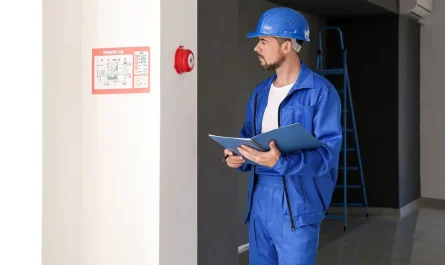7 Proven Signs Your Future Home Will Hold Its Value for Years
It’s simple to get sucked into the allure of a large lawn or a sunny kitchen when purchasing a property. I’ve been there, standing in a living room, picturing family portraits on the walls and future dinners. The issue that most purchasers overlook, though, is that a property is one of your major financial investments and more than just a place to live.
The question isn’t just, “Do I like it now?” as with any significant investment.When I decide to sell, will it still be worth the same?This is where astute purchasers are at an advantage. They can identify the subtle indicators that a property will continue to hold its value in the market regardless of the state of the economy.
In this article, I’ll outline the seven indicators I look for when assisting customers in selecting a home that is not only aesthetically pleasing but also constructed to maintain its value. These aren’t just corny location, location, location clichés; they’re supported by actual market data, professional opinions, and lessons gained from years of observing transactions in real life.
By the conclusion, you will be able to enter a property and determine in a matter of minutes if it will either discreetly drain your investment or defend it. Let’s begin with the initial indication.
Sign 1 Location With Future-Proof Potential

The location of the house cannot be altered, but the flooring and paint colors may. Location is your safety net because of this. Even in a weak market, a good location can safeguard your investment.
I concentrate on these location markers while I’m assisting clients in making decisions:
-
Good schools
Even if you don t have kids, school districts influence buyer demand and resale value. -
Proximity to job hubs & public transit
Saves commute time, attracts working professionals. -
Upcoming infrastructure projects
New metro lines, highways, or business parks can increase demand over time. -
Low crime rate
A safer area is always in higher demand, which keeps prices steady.
It goes beyond the present. In ten or fifteen years, would this location still be appealing?
Look at the city s development plans, neighborhood trends, and how locals feel about future changes. Additionally, walkability is a big benefit. 78% of buyers say they would pay more for walkability, and 79% of buyers consider it significant, according to the National Association of REALTORS. That is a blatant indication that a livable, linked neighborhood has lasting worth.
The land and location frequently increase in value, even if the house ages. Investing in a future-proof site is similar to purchasing insurance for the value of your home.
Sign 2 Historical Price Trends & Comparable Sales (Comps)
Purchasing a house without researching its price history is similar to investing in a business without considering its track record. You only need to read the story that the numbers tell you.
This is how I go about it:
-
Look back 5 10 years
in local property records or real estate sites. -
Check if prices show
steady growth
instead of random spikes or sudden drops. -
Compare your target home with
recently sold properties
(comps) of similar size, age, and features in the same area. - Notice how quickly those homes sold and whether they went for asking price or more.
Why steer clear of sudden price increases? A steady increase is a far better indicator of market stability because they are frequently linked to fleeting hype.
My own advice: If comparable properties sell fast and at reasonable prices, it indicates that purchasers value the neighborhood. Don’t buy them if they need price reductions or remain unsold.
Sign 3 Walkability & Neighborhood Vitality
The vitality of the neighborhood surrounding a house adds to its worth in addition to its physical attributes. That is walkability’s strength.
Here’s what I look for when assessing a neighborhood:
-
Nearby amenities
: Grocery stores, caf s, gyms, and pharmacies you can reach without driving. -
Green spaces
: Parks or tree-lined walking paths that invite people out of their cars. -
Active local community
: Farmers markets, block parties, or local meet-ups that show the neighborhood is alive. -
Transit access
: Easy access to buses, train stations, or bike docks adds convenience and value.
Not only do walkable neighborhoods feel wonderful, they also fetch higher prices. Every extra point in a walk score can raise a home’s market value by about $3,000, per a City Observatory study on the economic impact of walkability.
And here is a brilliant Reddit comment:
Increased rent or home costs are just an indication that a location’s walkability raises its appeal and economic worth.
A few years after a city designs new amenities like bike lanes, pocket parks, or a transit station, those locations frequently turn into demand hotspots.
Sign 4 Strong Condition & Minimal Deferred Maintenance
If the foundation of a lovely property is crumbling, it quickly loses its luster. I therefore emphasize how crucial it is to assess a home’s general condition before making any commitments.
Before considering an offer, I use this short checklist:
-
Structural health
: Any wall or foundation cracks? Watch closely. -
Roofing
: Missing shingles, signs of sagging, or past leaks are red flags. -
Plumbing & Electrical
: Old, inconsistent wiring or plumbing can be costly and sometimes dangerous. -
Major systems
: HVAC, water heater, insulation are they modern or on their last legs?
And don’t undervalue the importance of first impressions. A house may appear more well-maintained and valuable right away by using these five curb appeal tips that every astute seller employs.
Keep an eye out for warning indicators:
-
Peeling paint, warped floors, musty odors these often hide water or mold issues. Sometimes, it s not major repairs but small neglects that hurt value here are
4 simple signs your house exterior needs cleaning
before they turn into bigger problems.
- Old knob-and-tube wiring or DIY electrical fixes avoid these unless you re budgeting big.
Value is destroyed by postponed maintenance. Frequently neglected properties:
- Sit on the market longer
- Lead to aggressive price negotiations
- End up selling at a discount or not at all
As a buyer, you can utilize this information to protect yourself from the harsh implications that deferred maintenance can have on sellers.
Sign 5 Flexible, Functional Layout With Broad Appeal
I imagine a variety of individuals living in a house when I walk in, including couples, families, housemates, and even distant workers living alone. The layout is a good indicator of long-term worth if it works for everyone.
What to search for:
-
Open but practical flow
spaces that feel connected yet purposeful. -
Multi-use rooms
a dining room that could be an office, or a den that could be a guest room. -
Good bedroom-to-bathroom ratio
avoids bottlenecks in daily life. -
Natural light
makes spaces feel larger and more inviting.
Things not to do:
- Over-personalized changes like oddly shaped rooms or built-in fixtures that limit use.
- Awkward layouts kitchens far from dining areas, bedrooms next to noisy living spaces.
A thoughtfully designed layoutsilently operates in the background, simplifying daily tasks and attracting the next buyer without requiring significant adjustments.
Sign 6 Energy Efficiency & Seasonal Features
Energy efficiency is now a selling point that purchasers actively seek for, not merely a nice-to-have. Low utility costs make homes easier to maintain and more comfortable to live in.
Top efficiency attributes to look for:
-
Solar panels
long-term savings and eco appeal. -
Quality insulation
keeps the home warm in winter and cool in summer. -
Modern HVAC systems
efficient heating and cooling reduce bills. -
Energy Star appliances
fridges, washers, and dishwashers that use less power and water.
Reasons for seasonal wows:
- A sunny garden for spring blooms.
- A cozy fireplace for winter nights.
- A pool or shaded patio for summer relaxation.
Loved homes typically hold their worth better, and a house that is easy on the finances and provides modest seasonal pleasures is likely to be cherished for many years. To go further, have a look at these three smart energy upgrades that increase the resale value of your house for doable solutions you can implement immediately.
Sign 7 Clean Legal & Zoning Status
A house may appear flawless from the outside, but the resale process may become a nightmare if the documentation isn’t in order. Before you fall in love with a property,verify every legal detail.
What has to be reviewed:
-
Title check
no disputes, liens, or pending claims. -
Zoning compliance
property use matches city regulations. -
HOA rules & fees
if there s a homeowners association, make sure its guidelines and charges are transparent. -
Valid permits
for all renovations, extensions, or major repairs.
Things not to do:
- Homes with unpermitted additions or basement conversions they can lower value and even block a future sale.
When ownership is clear and well-documented, there are fewer hassles today and no unpleasant surprises when it’s time to sell.
Bonus Sign Land Appreciation vs. Structure Depreciation
Buildings age, but land retains power. This is a reality that real estate investors cling to. The property on which a house is built can increase in value, particularly if it is in a desirable area, even if the house itself depreciates due to wear and tear.
Why this occurs:
-
Scarcity factor
there s only so much land in prime city zones. -
Redevelopment potential
older homes are often bought for the lot, not the structure. -
Urban growth
as cities expand, land near the center becomes more sought-after.
For instance, because the land alone is valuable, an older, modest house in a key district can sell for an unexpectedly high price.
When purchasing, pay attention to both the building and the earth beneath it, as this is where long-term value is frequently hidden.
Final Thoughts
One of the most significant financial decisions you will ever make is purchasing a property, and the indications you choose to look for today will determine its future value more than chance.
You’re investing in a wise, long-lasting investment rather than merely purchasing a home if you pay attention to factors like location, long-term trends, community vitality, upkeep, versatility, efficiency, and clean legal standing.
A house with the appropriate foundations will always find customers willing to pay its value, regardless of how much the walls age and how fashions change. That is what separates a property that is attractive now from one that endures for many years.
It’s your turn: What is the first indication that a house is a keeper when you look at it? Drop your tip in the comments you might save someone from making a bad call.
Want more professional advice?For helpful advice, checklists, and tactics to assist you in purchasing, improving, and safeguarding the value of your house, visit Build Like New.
Disclaimer:This article is forinformational purposes onlyand does not constitute financial, legal, or real estate advice. Always consult with a licensed real estate agent, financial advisor, or legal professional before making property purchase decisions. Market conditions can change, and individual circumstances may vary.
Contents Table
-
Sign 1 Location With Future-Proof Potential
-
Sign 2 Historical Price Trends & Comparable Sales (Comps)
-
Sign 3 Walkability & Neighborhood Vitality
-
Sign 4 Strong Condition & Minimal Deferred Maintenance
-
Sign 5 Flexible, Functional Layout With Broad Appeal
-
Sign 6 Energy Efficiency & Seasonal Features
-
Sign 7 Clean Legal & Zoning Status
-
Bonus Sign Land Appreciation vs. Structure Depreciation
-
Final Thoughts




